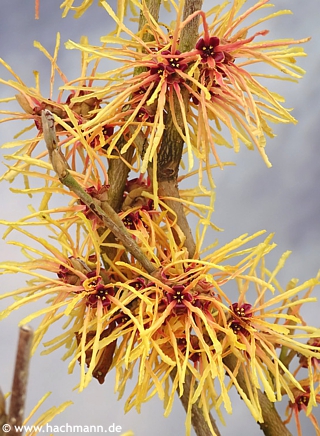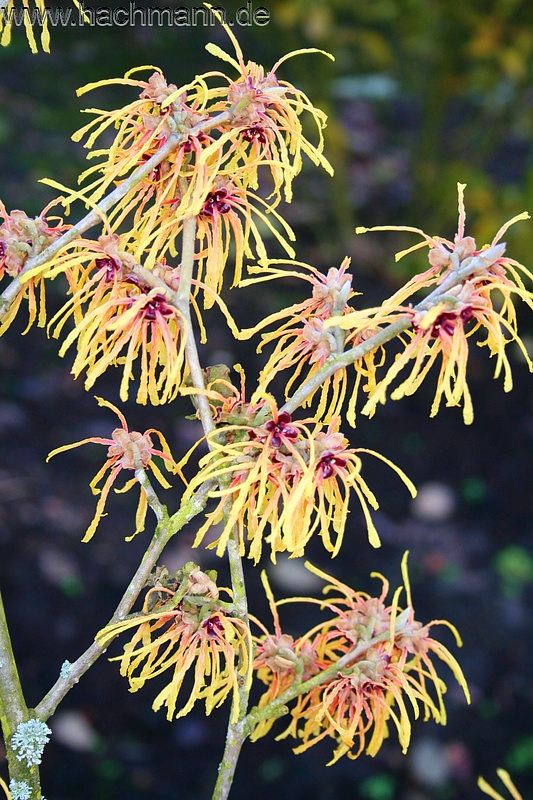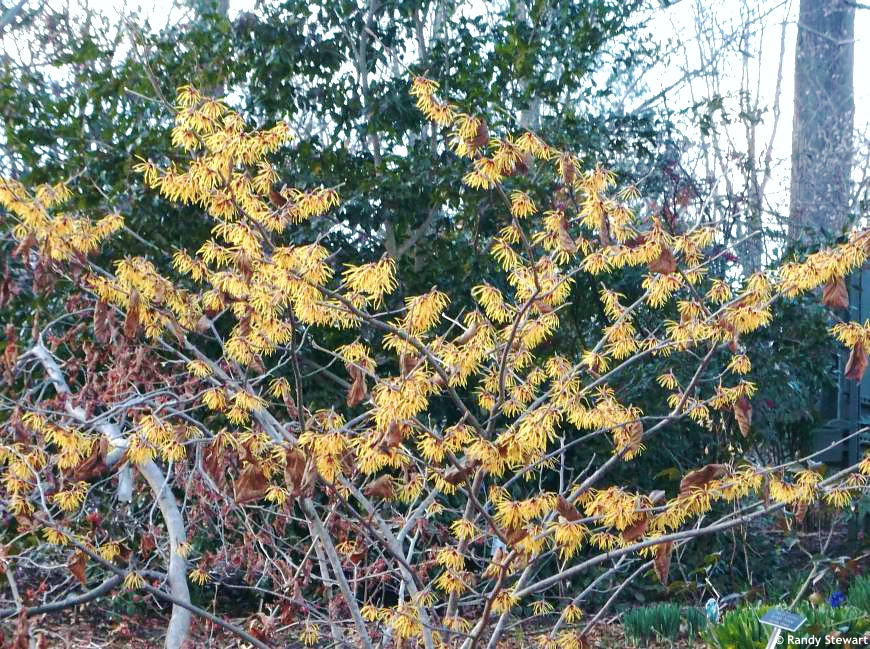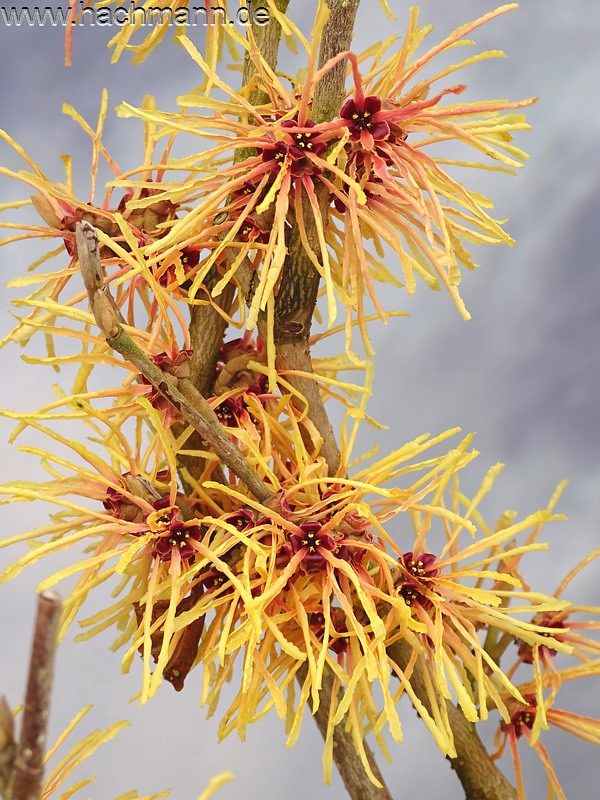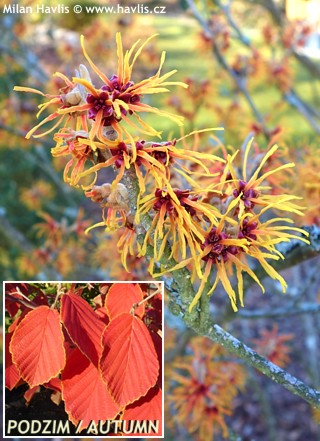Hamamelis x intermedia 'AURORA' witch hazel
size/type
taller shrub,taller shrub
usual height
2-3,5m
usual width
2-3,5m
leaves
deciduous broadleaf
colour of leaves
flowers
showy
colour of flowers
blooming time
February-March
location
full to partial sun
soil type
acidic (peaty)
soil moisture requirements
evenly moist (dislikes drought)
USDA zone (lowest)
5 (down to -29°C)
winter protection
for zone 5+6

for zone 7

categorized
Hamamelis
Witch hazels are unique shrubs that offer profuse flowering at times when everything else in the garden looks dull and far from cheerful. They are hybrids Asian species h.japonica and h.mollis. They form deciduous, mid-sized shrubs or small trees of an open vase shape, and thanks to its maximum size of about 3m they fit even a small garden.Description of the plant:
Aurora is a late witch hazel variety with possibly the largest flowers so far described (3-4 cm). They boast a two-tone effect being dark red at the base, grading to golden yellow, keeping some red highlights along the petals. This colour play gives the flowers an overall coppery orange feeling. They come out later than most, usually from mid to late February, and continue blooming for 6-8 weeks. They are pleasantly fragrant, releasing a medium strong, sweet and spicy perfume on a sunny day. Aurora grows fast into a spreading, vase-shaped shrub, and produces flowers already from the base. Another thing makes witch hazels very attractive – autumn foliage colour. The leaves are deciduous, similar to hazel, rounded but larger, and turn vibrant orange and scarlet red in autumn. It was bred by Jan van Hejningen in 1985, a Dutch nursery teacher of botany and a hamamelis expert. He crossbred at least 7 varieties, all of which have names beginning with a letter A. Aurora received AGM (the Award of Garden Merit) by the RHS (Royal Horticultural Society of England) in 2005.
Grow them in acid to neutral, moist but well drained soil. They don’t tolerate lime or hard pruning when older. Sunny location or light semi-shade is best. Fully hardy to about -29°C (USDA zone 5) but exposed sites are not recommended.
Last update 01-03-2020
QUICK PRICE OVERVIEW
CURRENTLY SOLD OUT
WANT TO TRY A SIMILAR PLANT?












